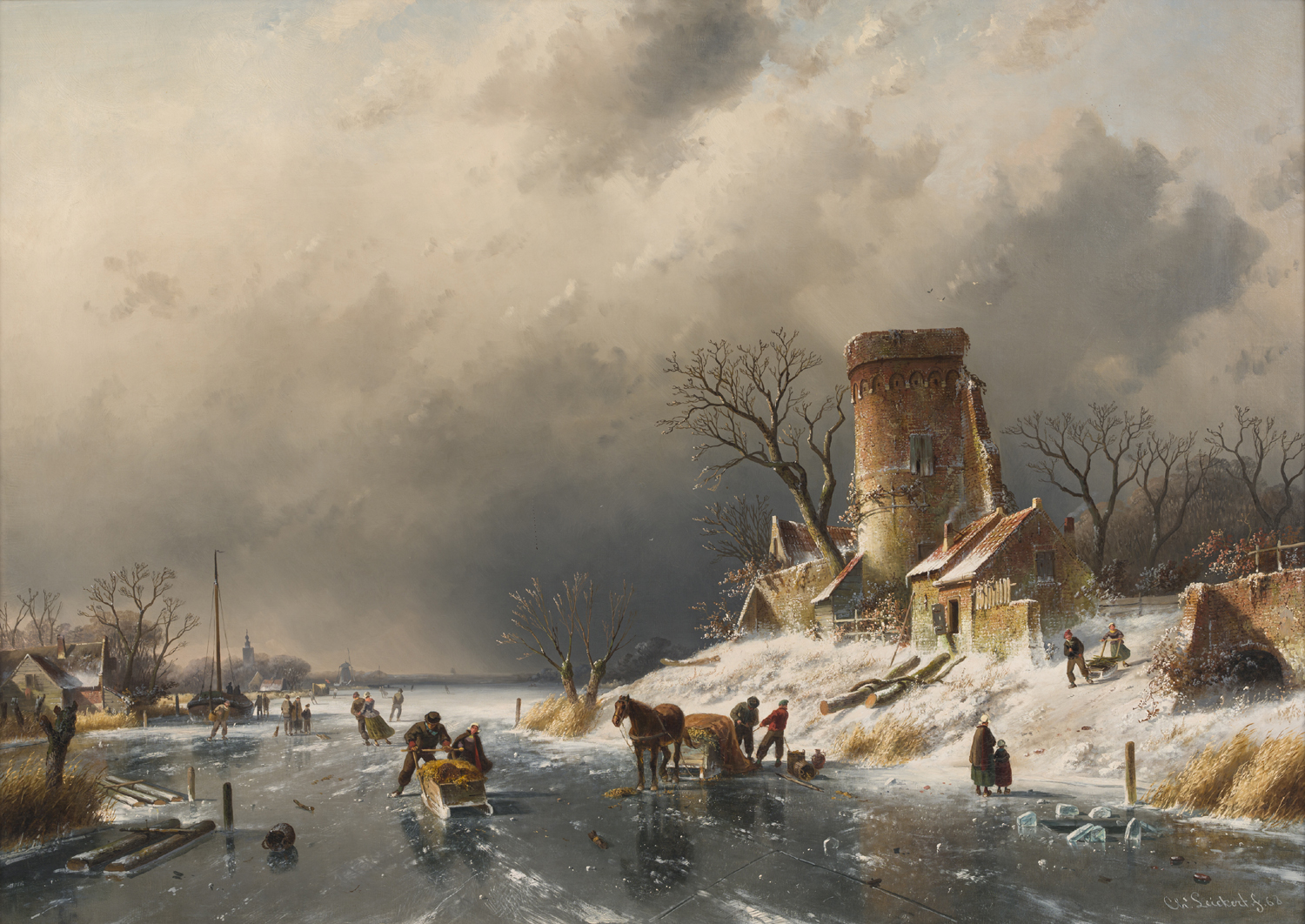Charles Henri Joseph (‘Charles’) Leickert
Dutch, Brussels (Belgium) 1816 – 1907 Mainz (Germany)
Charles Leickert was born in Brussels. His father was chamberlain to the Dutch King William I. Back then the king resided alternately in The Hague and in Brussels (Belgium belonged to the Kingdom of Netherlands up to 1830). Leickert studied at the academy in The Hague. He was also taught by Bart van Hove and Wijnand Nuijen, but was influenced most by Andreas Schelfhout. It was the period of the Romantic School and these teachers were amongst its most prominent representatives. Compared to elsewhere in Europe, in the Netherlands Romanticism was approached differently. Grotesque, exotic and mystical elements like imposing waterfalls or cloyingly sweet skies were mostly lacking. Instead of working from a nostalgic desire for distant places the Dutch painters wanted to depict the beauty of their own environment. This resulted in detailed and atmospheric paintings of attractive towns and untouched Dutch landscapes with windmills and rivers.
Leickert was one of the most productive painters of the Dutch 19th century. He left a sizeable oeuvre that is characterised by recurring themes such as a view of a river in summer and a winter landscape with ice skaters. Like his contemporaries, Leickert made sketches in nature and he would later create oil paintings from those sketches. It was not uncommon for him to leave out existing elements from the landscape, or to add made up elements. As many artists he did not aim to create a topographically correct display, but he painted realistic scenes and would incorporate elements to arrive at a desired composition.
In 1849 Charles Leickert moved from The Hague to Amsterdam, where he joined Arti et Amicitiae and the Royal Academy. There he reached the peak of his artistical abilities in the 1850s and 1860s. But it was also his most productive period. And to be able to satisfy the large demand for his paintings he often painted somewhat superficial as well. So particularly with Leickert’s paintings, it is important to be strict when it comes to quality. His high quality paintings are amongst the most sought after paintings of the Romantic School. They stand out because of the brilliance of colour, the balanced compositions and the precision with which they were painted.
When Leickert passed away his studio inventory went to a teacher he had met in Mainz. In 1928 the estate was presented to the Mittelrheinisches Landesmuseum in Mainz. An interesting collection of Leickert’s study materials can still be found there, which includes 750 pencil sketches and three sketchbooks.







